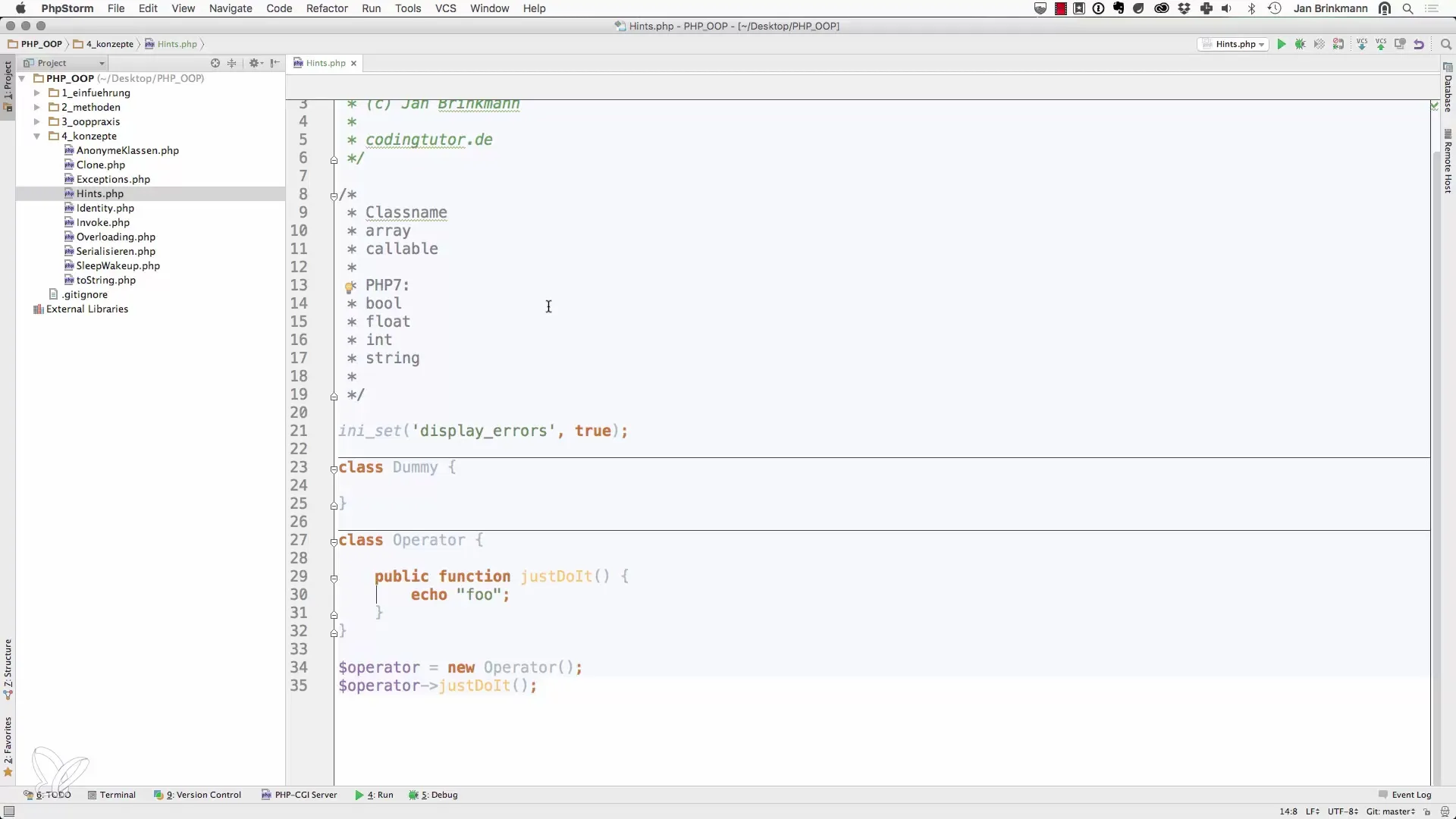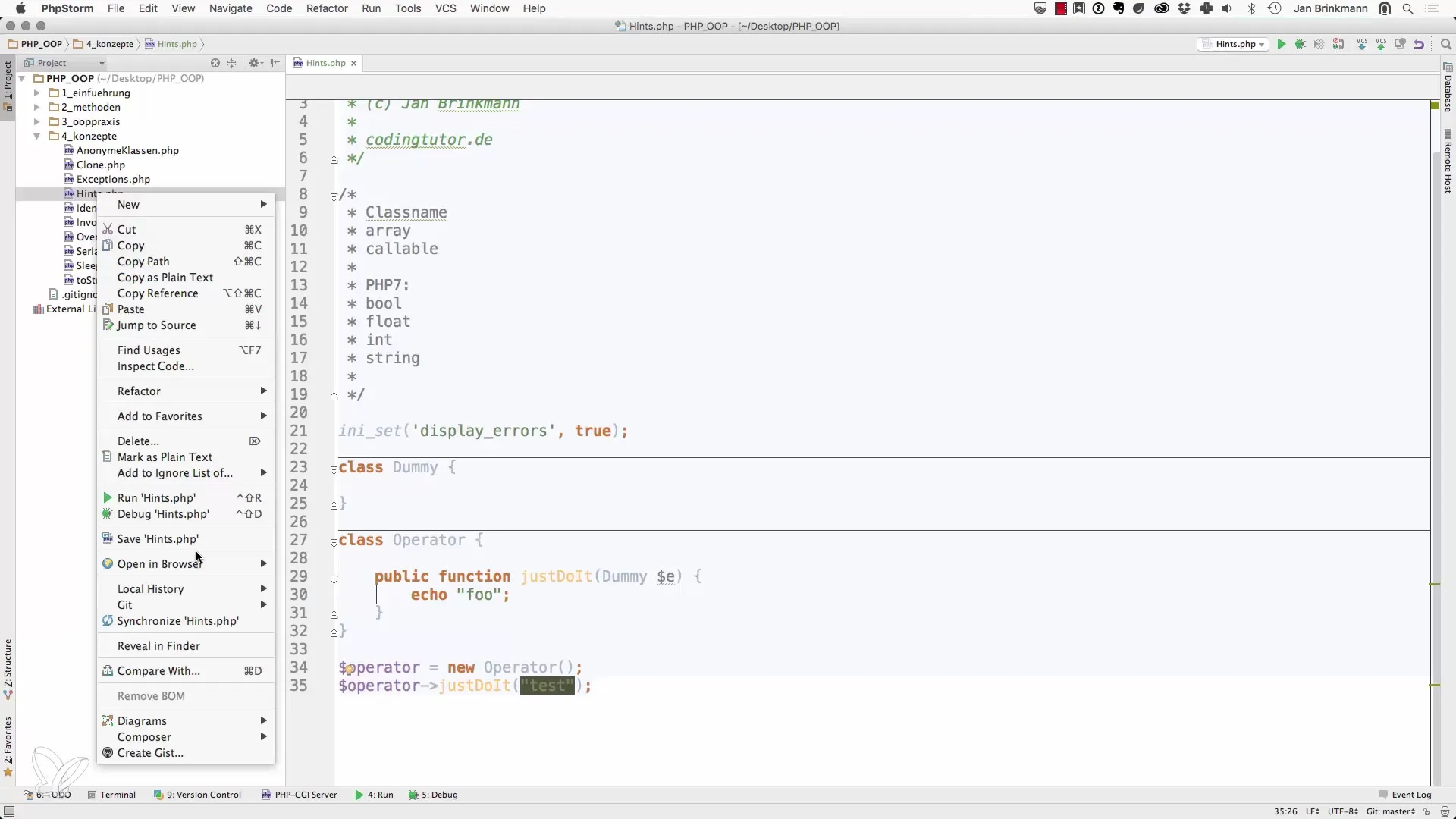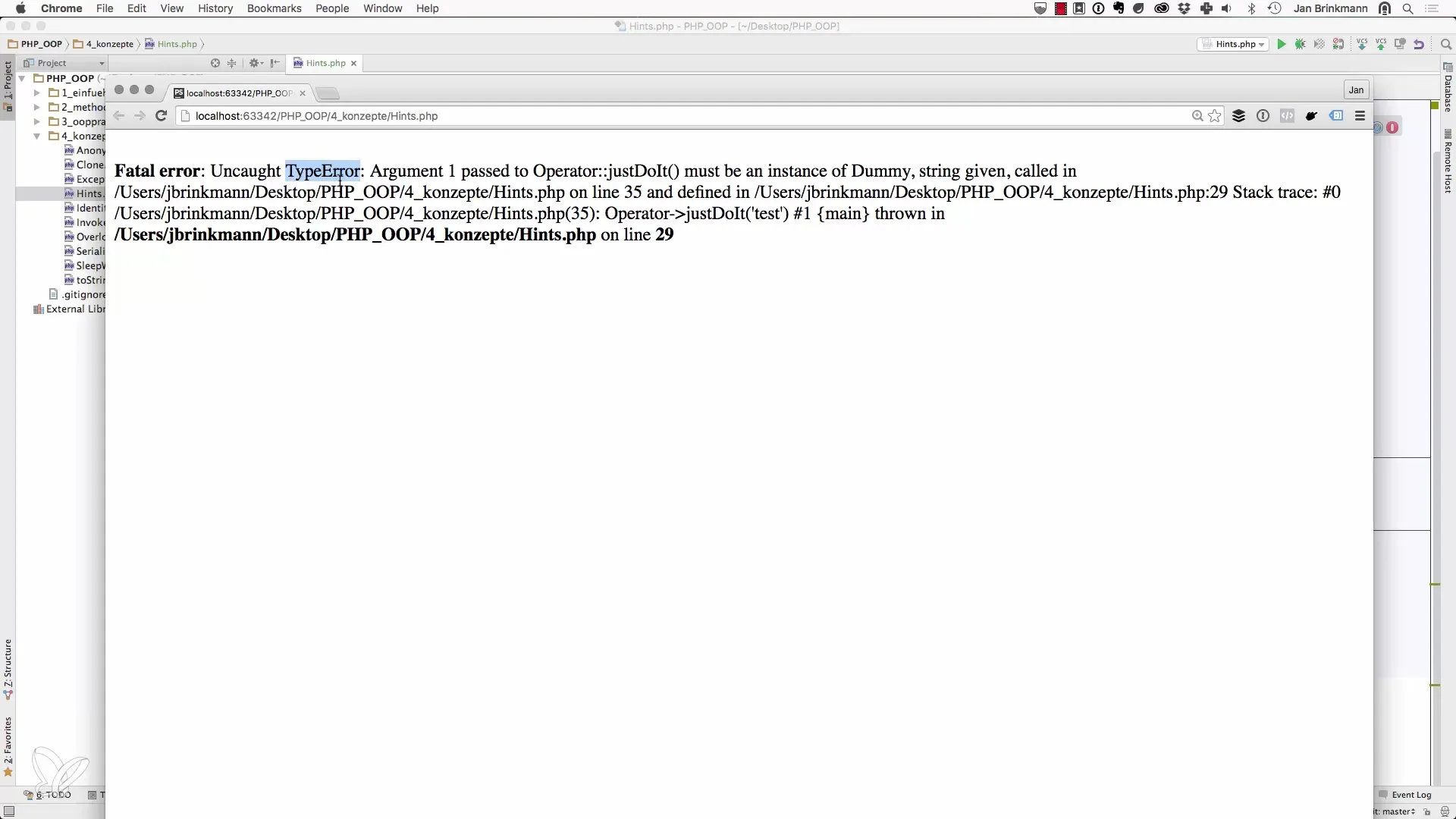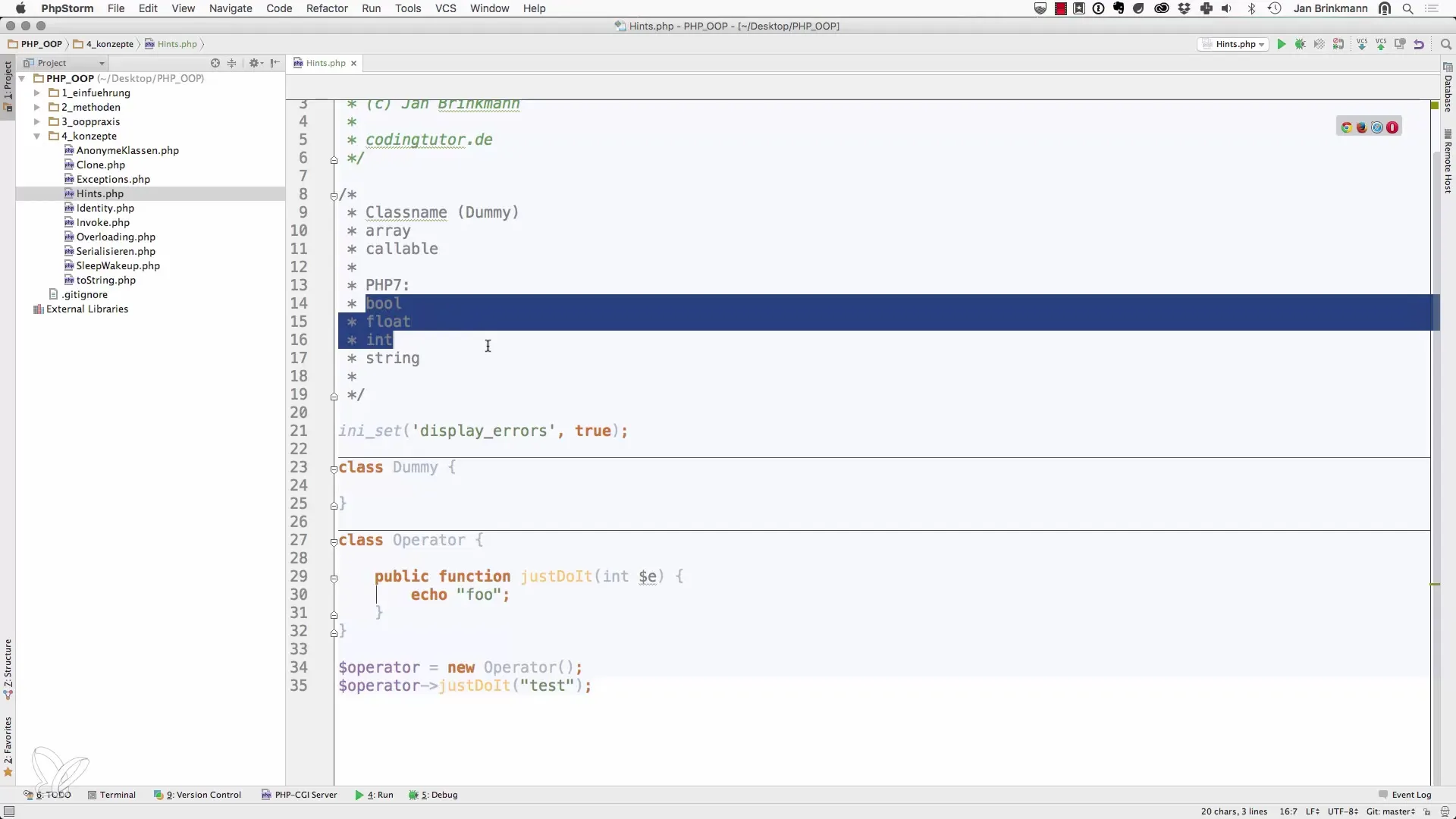In PHP 7, you can significantly improve your programming by using type-hints for scalar data types. Type hints ensure that specific data types are expected in your functions and methods, leading to higher code quality and readability. In this guide, you will learn how to effectively use type hints in PHP 7 and why this is essential for your developer practice.
Main insights
- Type hints in PHP 7 now also support scalar data types such as string, int, and bool.
- These new type hints improve code readability and debugging.
- Correct use of type hints can catch errors at development time.
Step-by-step guide
Step 1: Understand the basics
Before you apply type hints in your code, it is important to understand how they work. In PHP 5, you could already specify that a parameter should be an instance of a specific class. In PHP 7, this was expanded to support basic data types such as int, string, float, and bool. This means you can specify what kind of value is expected in the method declaration.

Step 2: Type hint for objects
To get started with type hints, first define a class. For example, you could create a Dummy class. When you then define a method in another class, you can use type hints to specify that a parameter must be an instance of Dummy.
If you now try to pass anything other than a Dummy instance, a TypeError will be thrown.
Step 3: Use scalar data types
Another new feature in PHP 7 is the ability to use scalar data types. For example, you can specify that a function expects an int or string. This gives you immediate feedback if you pass a wrong type.
If you pass something other than an integer in this function, an error will be displayed, so precisely that you will immediately know where the problem lies.

Step 4: Catch errors
An important element to keep in mind is that type hints not only improve code quality but also help detect errors early. In PHP 7, a TypeError is thrown when the wrong data type is passed to a method. You can use these error information to make your code more robust.

Step 5: Increase code readability
Using type hints not only results in fewer errors but also improves the readability of your code. The developer who calls your method immediately sees which data types are expected. This creates clarity and reduces the need to search through the code to figure out what is expected.
Step 6: Additional data types
In PHP 7, you can also specify that a parameter must be an array or a callable method. This expands the possibilities of type hints and gives you more flexibility in defining your functions.
Using type hints for collections or functions makes the code not only easier to understand but also reduces the risk of runtime errors.

Summary – Apply type hints for scalar data types in PHP 7
Type hints in PHP 7 are a valuable addition for any developer. They give you the opportunity to ensure that the correct data types are passed to your methods and make the code generally more readable. By using type hints for scalar data types, you can significantly enhance both code quality and the number of runtime errors.
Frequently asked questions
How do type hints work in PHP 7?Type hints allow you to define the data type of parameters in a method, ensuring that only the desired data types are passed.
What types of data types can be used in PHP 7?In PHP 7, you can use types such as int, string, float, bool, array, and callable.
How do type hints improve code readability?Type hints make the expected data types visible in the method declaration, making it easier to understand and use the code.
What happens when the wrong data type is passed?A TypeError is thrown, informing you which data type was expected and which was passed instead.
What is the benefit of typing arrays and callables?You increase the flexibility of your code and minimize runtime errors, as the type of the passed arguments is already defined when the method is declared.


